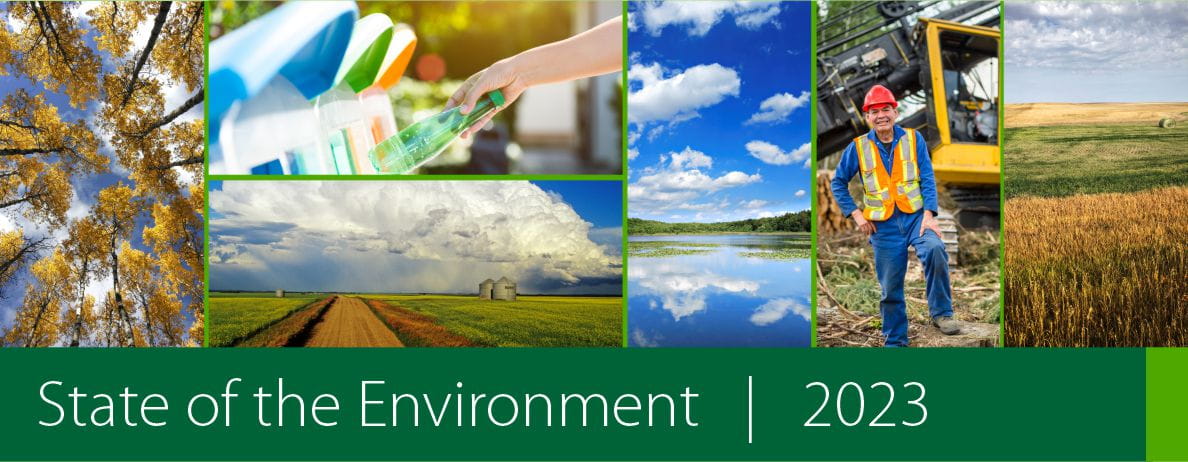About the Report
The State of the Environment Report reports on the current condition of the environment and the relationship to the provincial economy and includes 18 indicators.
Minister's Message
This year's State of the Environment Report – which our government publishes in various forms every two years – builds on measures highlighted in our 2017, 2019 and 2021 reports.
Agricultural Land Cover
For the information available, agricultural land use in Saskatchewan has remained relatively stable.
Air Pollutant Concentration
Measuring and evaluating the concentration of air pollution across Saskatchewan is a vital activity.
Air Pollutant Volume
Saskatchewan has a number of tools available to ensure air quality is safe for people and the environment.
Annual Timber Harvest
Healthy forests provide benefits such as clean air, fresh water, wildlife habitat and materials for building homes.
Forest Sector Contributions to the Provincial Economy
This indicator measures the economic benefits derived from harvesting timber and manufacturing forest products in the province.
Forest Type and Age
The type and age of forests are important factors to consider when managing Saskatchewan's natural resources. Forest management in Saskatchewan is designed to result in a forest age structure that emulates natural disturbance.
Greenhouse Gas Emissions
This measure discusses the effects of a changing climate on the province and economy, as well as government programs designed to address the impacts.
Impacted Sites
In Saskatchewan, environmentally impacted sites are typically associated with transportation, manufacturing, industrial, commercial or mining activities.
Indigenous Involvement in the Forest Sector
Indigenous involvement is critical to the success of the forestry sector in Saskatchewan.
Intact Boreal Forest
An intact boreal forest ensures contiguous tracts of diverse habitat are available for boreal wildlife species and provides a massive store of carbon.
Mountain Pine Beetle Detection and Prevention
MPB is the most significant pest threat to pine forests in North America.
Natural Forest Disturbance
Disturbances, such as wildfires, are natural and essential processes in Saskatchewan's boreal forests.
Private Land Stewardship
Land stewardship involves managing soil, air, water and biodiversity resources wisely and in a way that keeps land healthy and productive.
Protected and Conserved Areas
Protected areas are added to the provincial Protected and Conserved Areas Network each year.
Regeneration of Timber Harvest Area
Forests that are successfully regenerated are essential to a long-term sustainable flow of wood products and ecosystem productivity.
Waste Reduction and Recycling
Saskatchewan has committed to reducing the amount of waste generated per person by 30 per cent by 2030 and 50 per cent by 2040.
Water Allocations
Water is allocated for various purposes, including agricultural, industrial, municipal and domestic use.
Water Consumption and Conservation
With a growing population, there is increasing pressure on Saskatchewan's water resources. Economic growth, climate change and extreme weather events add to the strain, making this measure even more important.
Historical Reports
Read previous State of the Environment reports.
State of the Environment 2019: A Focus on Forests
This second comprehensive assessment of our province's Crown forests reports on productivity and resilience, economic and social benefits, biological diversity, and sustainable forest management.

